Dressing Surgical Wounds
Most surgery can be categorised into two groups: elective (‘clean’) and emergency (this is often referred to as ‘dirty’).
A surgical wound of the latter category has a higher incidence of dehiscence or complications.
Dehiscence is defined as:
‘Separation of the layers of a surgical wound, it may be partial or only superficial, or complete with separation of all layers and total disruption.’
(Miller-Keane Encyclopedia and Dictionary of Medicine, Nursing, and Allied Health 2003)
There are a number of well-identified risk factors that can lead to wound dehiscence, including being overweight, increasing/advanced age, poor nutrition, diabetes, smoking and having had radiation therapy previously in the area.
The elective case has the opportunity to correct some of these risk factors; however, the emergency case may not have such an opportunity.
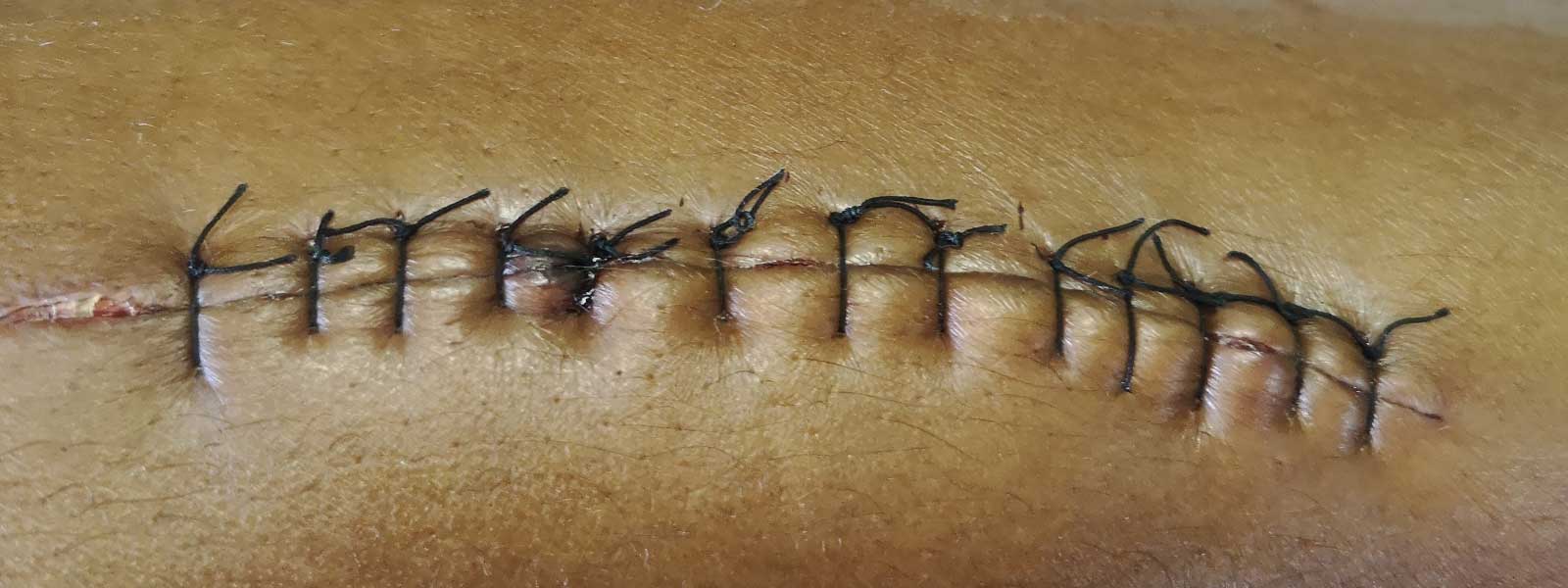
Suture Line
The simple, straightforward suture line is generally treated with a dressing that will manage a small amount of anticipated, early inflammatory exudate and provide a waterproof covering.
All surgical wounds do require support and this is an important factor both for reducing oedema and ensuring patient comfort.
This type of dressing is generally left intact for five to seven days and then removed for inspection of the suture line, with the view to remove the staples or sutures as prescribed.
Suggested dressings to achieve the aims for simple suture lines include: Opsite™ Post-Op and Mepore Pro™.
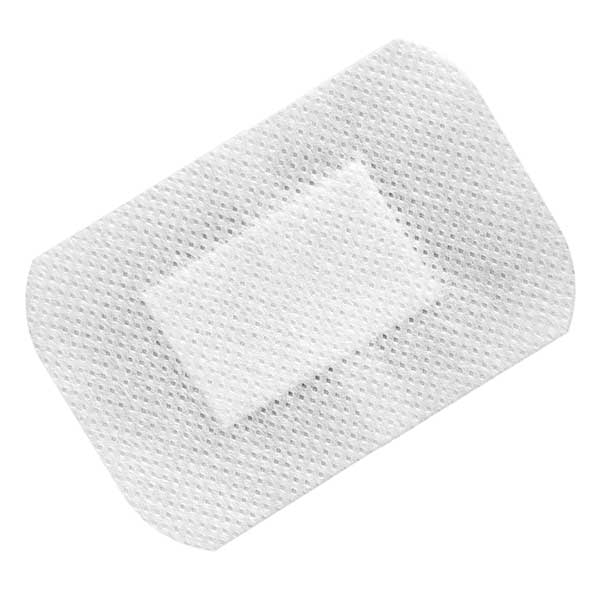
Type: Composite dressing.
Features: Absorbent, self-adhesive, cushioned, breathable, waterproof.
Uses: Surgical wounds, cuts, abrasions, low to moderately exuding wounds.
Examples: Opsite™ Post-Op, Mepore Pro™.
Care of this simple suture line then involves continued support and hydration. For this, some surgeons prefer supportive adhesive flexible tape for ongoing scar hydration, such as Fixomull™ and Mefix™.
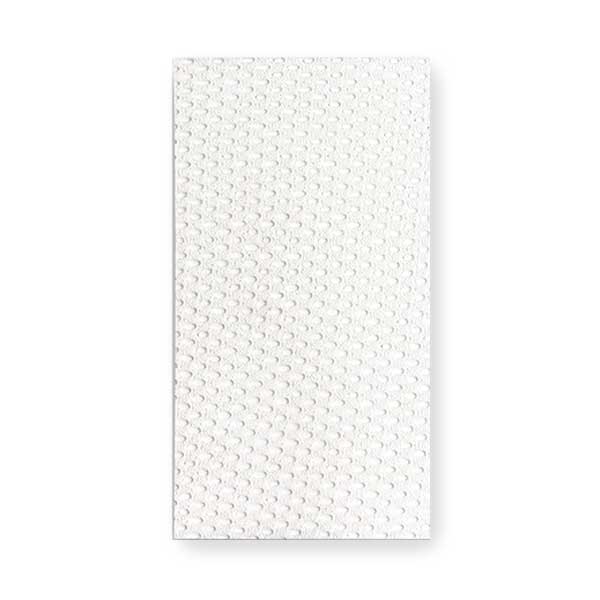
Type: Adhesive flexible tape.
Features: cut to size, adhesive, flexible, allows hydration.
Uses: fixing primary dressings, catheters and tubes.
Examples: Fixomull™, Mefix™.
Dehisced Surgical Wound
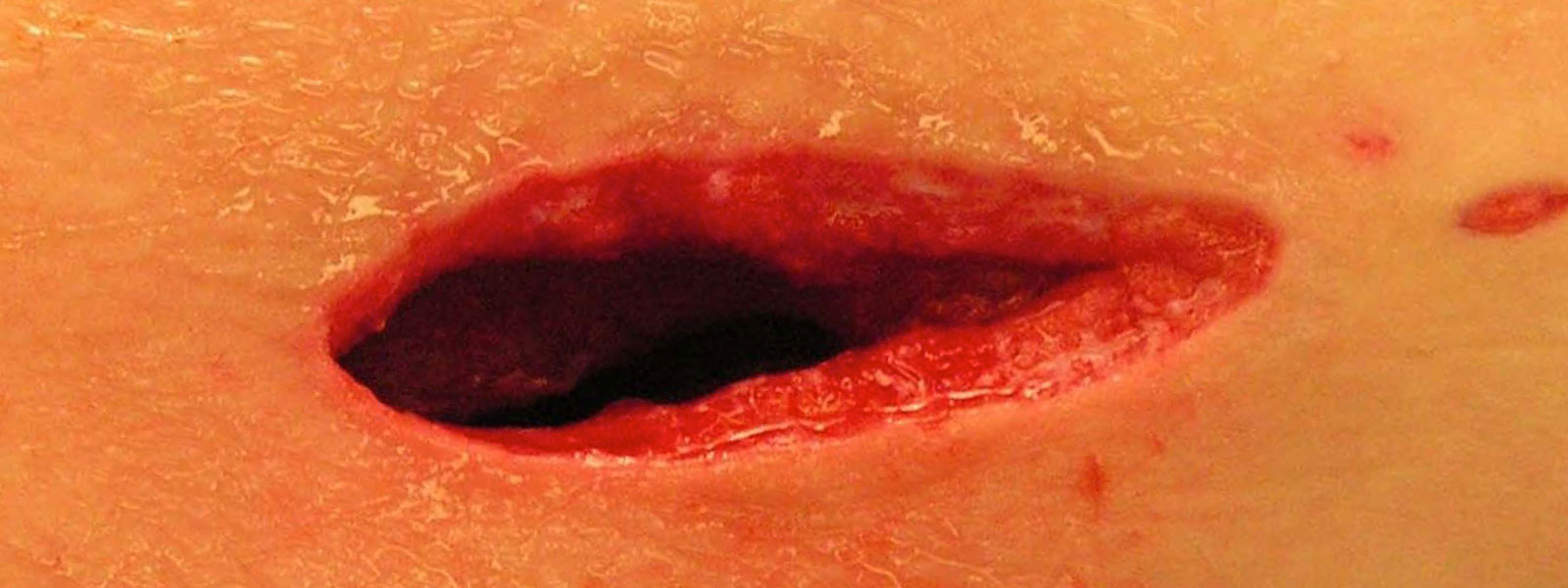
The dehisced surgical wound requires a thorough assessment of cavities or structures involved, as well as checking for the presence of foreign bodies, infection and/or necrotic tissue. Once these parameters have been considered, an aim can be set.
Removal of necrotic tissue and management of infection is paramount to move on to the wound healing phase.
Surgical debridement may leave large cavities or areas of raw tissue, which can ideally be managed with a topical negative pressure device. This wound care ‘vacuum cleaner’ will remove excess exudate and contain it in a canister, away from the wound surface.
Due to the negative pressure, the wound edges are drawn in, helping to promptly reduce wound surface. This also reduces oedema, an important aspect to consider in all instances of wound care.
Dressing Abrasions
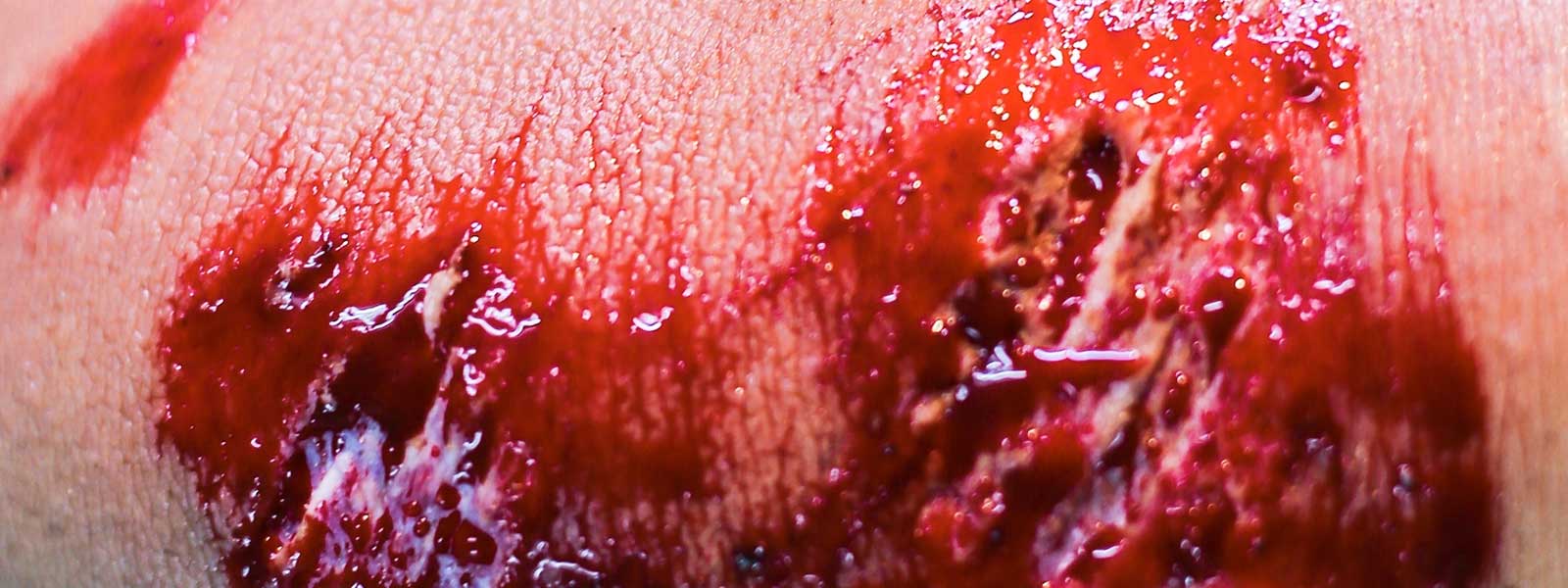
These wounds are generally acute and, in most circumstances, go on to heal almost regardless of what is done. Simple abrasions, in particular, if not managed by a healthcare professional, form a scab that eventually drops off, revealing a healed area beneath.
The issue here however, is that this type of healing is slow and can result in an unacceptable scar.
The best management of an abrasion is to stop the bleeding, give the area a good clean with an antiseptic and then apply a mesh dressing that will protect the superficial raw area and allow new tissue to form quickly without being damaged when the first dressing is attended. Mesh dressings for this purpose include: Mepitel™, Urgotul™, or Hydrotul™.
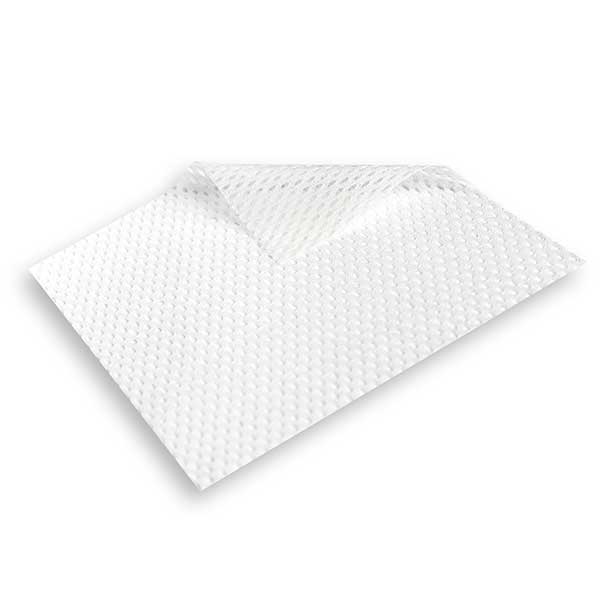
Type: Mesh contact layer.
Features: low-adherence, supportive, allows exudate to pass through, transparent.
Uses: abrasions, skin tears, lacerations, ulcers.
Examples: Mepitel™, Urgotul™, Hydrotul™.
The secondary dressing on this mesh is generally a light absorbent adhesive pad, such as Cutiplast Steril™ or Primapore™.
A secondary waterproof dressing is generally not recommended for this first dressing due to the risk of infection – the excessive heat and moisture will create an environment conducive to bacterial growth.
At the next dressing change, if there are no signs of infection, then a waterproof dressing can be used as the secondary dressing, provided all environmental considerations have been made.
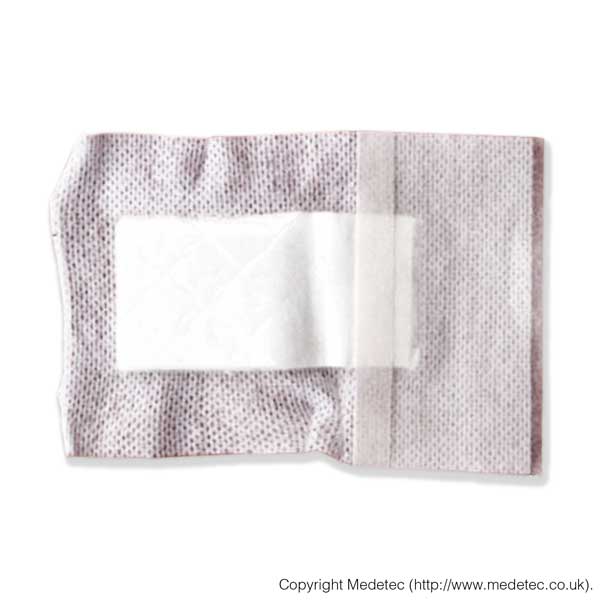
Type: Super-absorbent.
Features: super-adsorbent, self-adhesive, cushioned, breathable.
Uses: surgical, cuts, abrasions, lacerations.
Examples: Cutiplast Steril™, Melolin™, Primapore™.
Dressing Lacerations
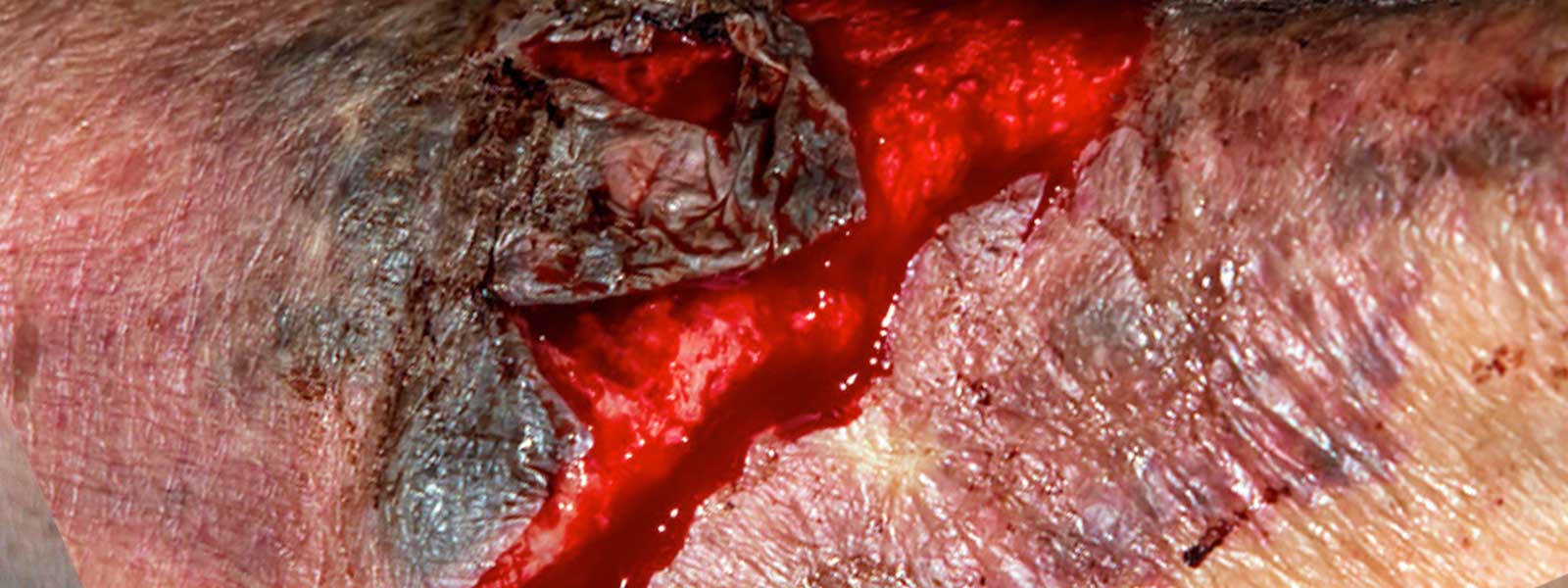
Simple Lacerations
After a thorough assessment, a small, simple laceration is generally managed with antiseptic cleansing, Steri-Strips™ and either a waterproof, light, absorbent dressing or a non-waterproof, light, absorbent, adhesive dressing, using the principles mentioned earlier about the risk of infection.

Type: Wound closure.
Features: Supportive, breathable, self-adhesive, non-invasive.
Uses: Surgical wounds, lacerations.
Examples: Steri-Strips™, Leukosan Strips™.
Complex Lacerations
More complex lacerations may be referred to an acute care facility or surgeon after initial assessment.
Foreign bodies and penetrating, deep lacerations may involve tendons and nerves, which will require specific specialised care.
The post-surgical wound will then need to be well managed to avoid infection. An antimicrobial dressing that is also absorbent and protective would be ideal.
Dressing examples include: Aquacel Ag™ and Aquacel Foam™ non adhesive, Acticoat Flex™ and Mesorb™, Atrauman Ag™, and Zetuvit™.
The dressings should be fixed in place with a firm crepe bandage and appropriately-sized tubular compression bandage (e.g. Tubigrip™) if the wound is on a limb.
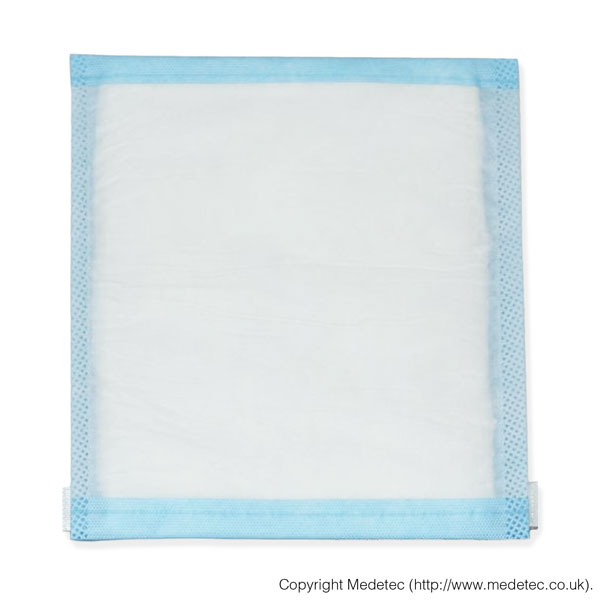
Type: Antimicrobial dressing.
Features: reduces the risk of infection, kills bacteria.
Uses: pressure ulcers, venous ulcers, surgical sites.
Examples: Aquacel Ag™, Aquacel Foam™, Acticoat Flex™, Mesorb™, Atrauman Ag™, Zetuvit™.

